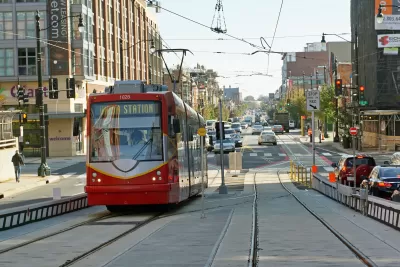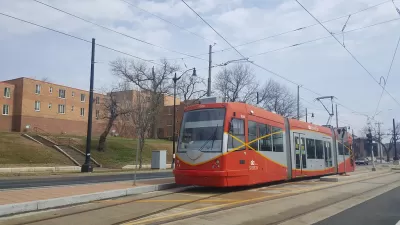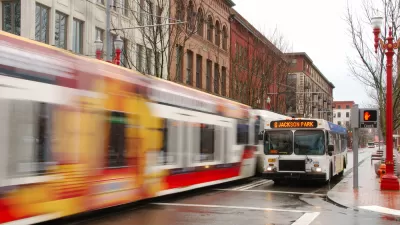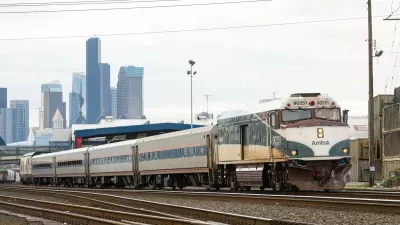Examining Portland and Seattle's much-talked-about systems, the authors highlight the importance of treating streetcars as a viable transport option, rather than just a means to stimulate development.

According to a report on two "pioneer cities" of the streetcar revival, "simply laying down trolley tracks to replace buses won’t bring development to those places unless other incentives are in place," Ashley Halsey III writes.
Looking at commercial and residential development permits issued in Portland and Seattle following streetcar construction, the researchers found "mixed results." Streetcars, they write, do not guarantee additional development opportunities, and the development that does occur often differs from what planners and policymakers initially envisioned.
"Although a streetcar may help stimulate development, there often need to be additional incentives that might include zoning changes, streetscape improvements, investment in public spaces, and tax and financing help," Halsey summarizes. It also helps to integrate streetcars into existing transit systems.
In a word, streetcar projects should be evaluated based on their effectiveness as transportation first, before the whims of the real estate market come into play.
FULL STORY: Are streetcars paving the way for urban development? A study says maybe.

Planetizen Federal Action Tracker
A weekly monitor of how Trump’s orders and actions are impacting planners and planning in America.

Restaurant Patios Were a Pandemic Win — Why Were They so Hard to Keep?
Social distancing requirements and changes in travel patterns prompted cities to pilot new uses for street and sidewalk space. Then it got complicated.

Map: Where Senate Republicans Want to Sell Your Public Lands
For public land advocates, the Senate Republicans’ proposal to sell millions of acres of public land in the West is “the biggest fight of their careers.”

Maui's Vacation Rental Debate Turns Ugly
Verbal attacks, misinformation campaigns and fistfights plague a high-stakes debate to convert thousands of vacation rentals into long-term housing.

San Francisco Suspends Traffic Calming Amidst Record Deaths
Citing “a challenging fiscal landscape,” the city will cease the program on the heels of 42 traffic deaths, including 24 pedestrians.

California Homeless Arrests, Citations Spike After Ruling
An investigation reveals that anti-homeless actions increased up to 500% after Grants Pass v. Johnson — even in cities claiming no policy change.
Urban Design for Planners 1: Software Tools
This six-course series explores essential urban design concepts using open source software and equips planners with the tools they need to participate fully in the urban design process.
Planning for Universal Design
Learn the tools for implementing Universal Design in planning regulations.
Heyer Gruel & Associates PA
JM Goldson LLC
Custer County Colorado
City of Camden Redevelopment Agency
City of Astoria
Transportation Research & Education Center (TREC) at Portland State University
Camden Redevelopment Agency
City of Claremont
Municipality of Princeton (NJ)





























